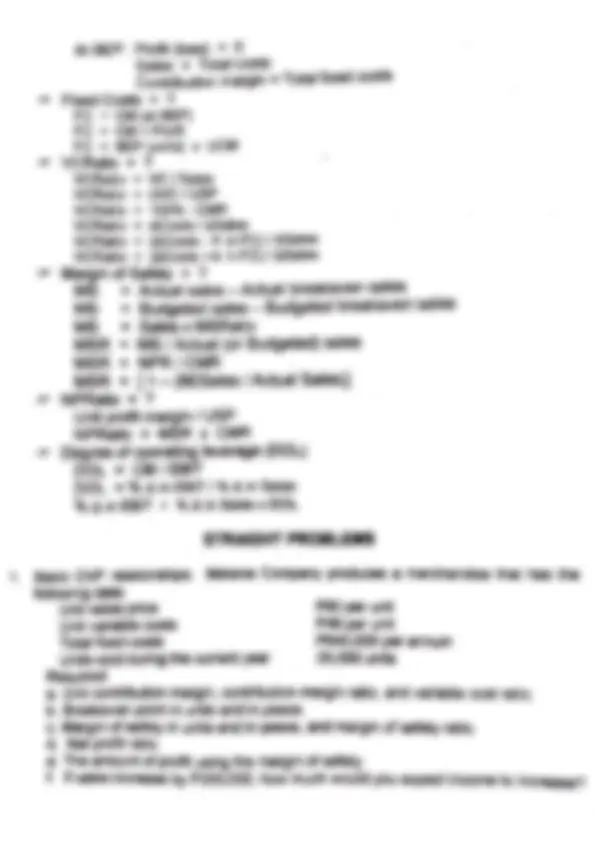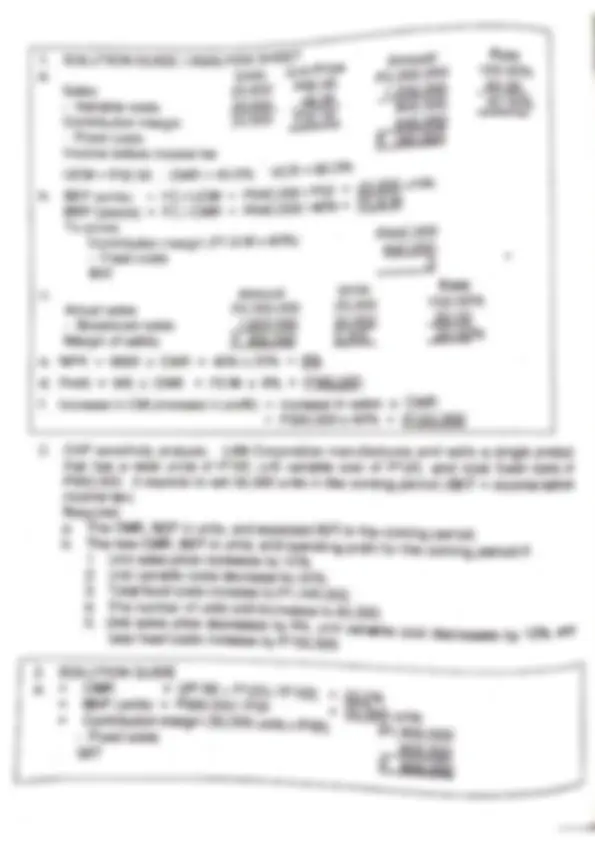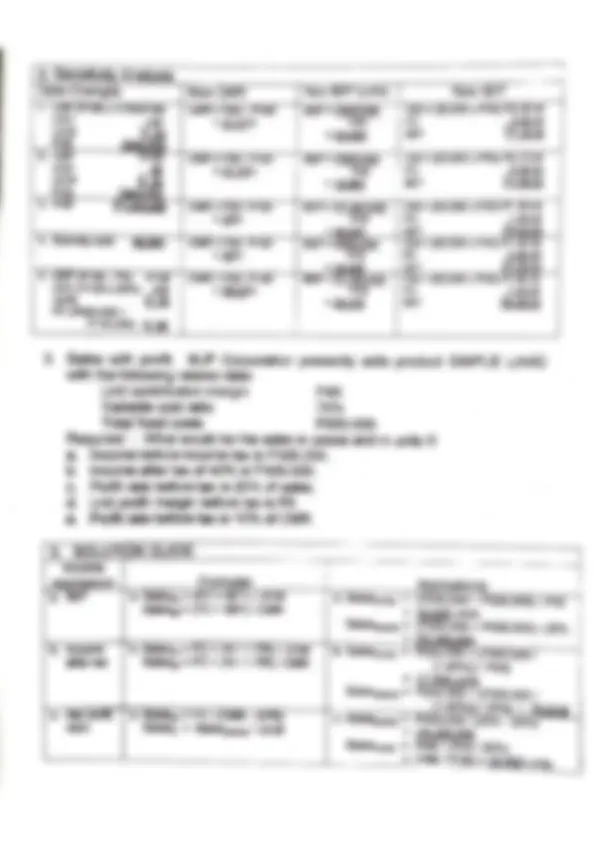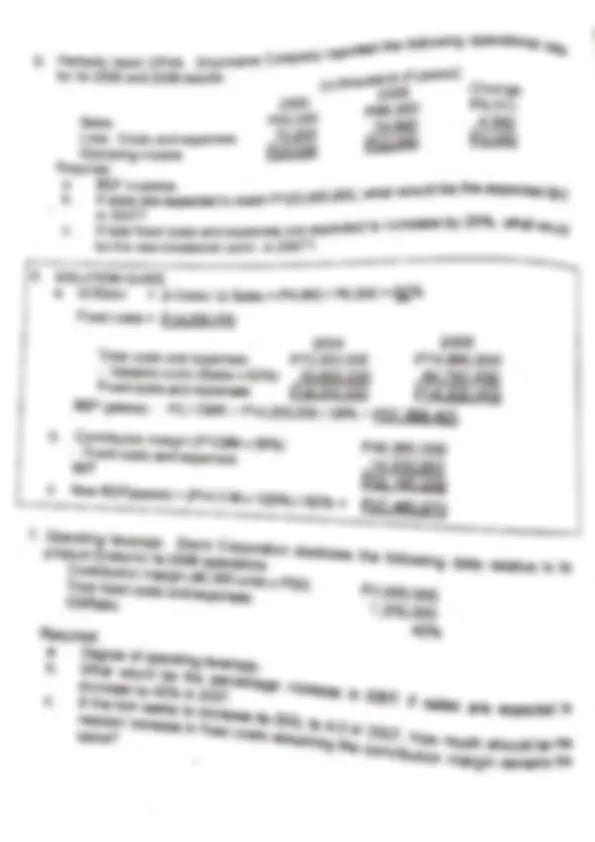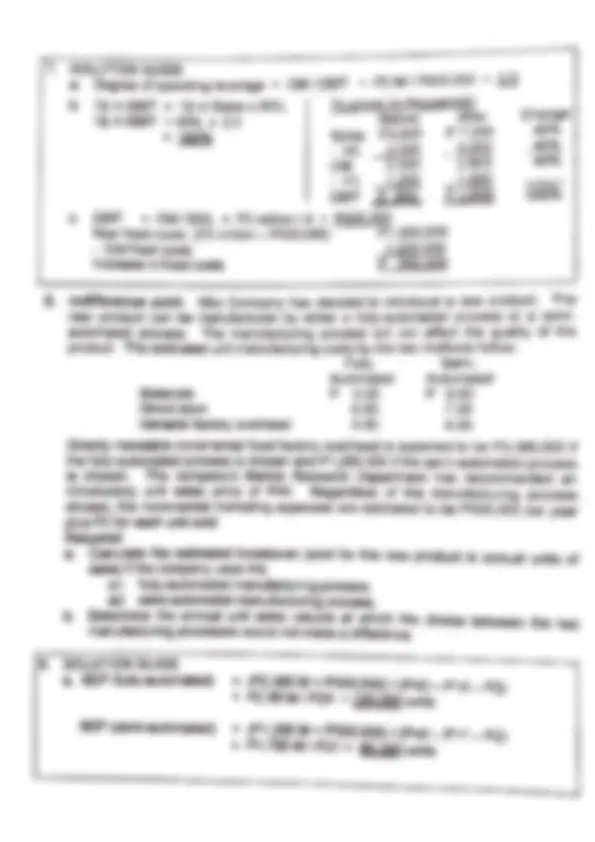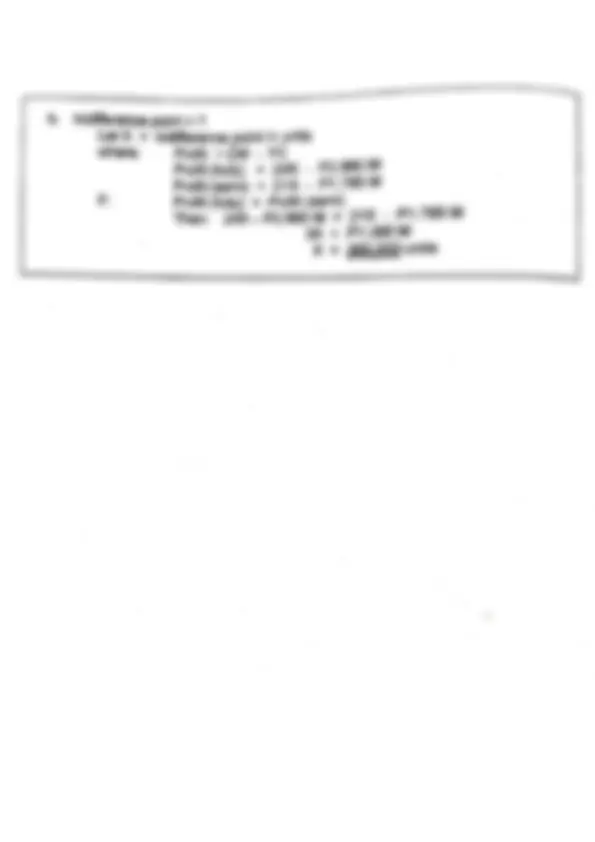Partial preview of the text
Download Chapter 1-3 cost accounting and more Lecture notes Cost Accounting in PDF only on Docsity!
© Basic principles ; = Costs and expenses are segregated into fixed and variable elements. = Profit = Sales —- Costs and expenses = Profit = Sales —Fixed costs — Variable costs* (“The fem cost means costs and expenses.) = Activities and operations are made within the relevant range © Basic assumptions within the relevant range ~- Linearity - The behavior of sales and costs is linear. ‘= Behavior of sales, costs, and expenses: . = Sales - it changes directly in relation to the level of units sold. ® Fixed costs - Total fixed cost is constant without regard to the change in the level of units of production and sales; unit fixed cost changes (i.e., unit fixed cost decreases as the level of production increases, and vice-versa). . © Variable costs— Total variable costs change in direct proportion with the level of units produced and sold; unit variable cost is constant. = Selling price - assumed to be constant. = WIP inventory — disregarded, there is no WIP inventory. = FG inventory — no change in the FG inventory (1.e., production = sales). ~ Product(s) and sales mix : © there is only one product, or > if there are 2 or more products produced and sold, the saies mix is assumed to be constant. © The marginal income statement (or variable income statement) = The condensed format = The expanded format Sales Px Sales Px - Variable costs and expenses _x - Variable costs of goods sold x Contribution margin x Manufacturing margin “x - Fixed costs andexpenses _x - Variable expenses x Income before income tax Px Contribution margin x ~ Direct fixed costs and expenses x Direct margin (or segment margin) - Indirect fixed costs and expenses Income before income tax PPh. * = Variable production costs refer to direct materials. direct variable overhead. " labor, and = Examples of variable expenses are delivery ex ; commission, and packing supplies. ry expenses, satesmen’s 
